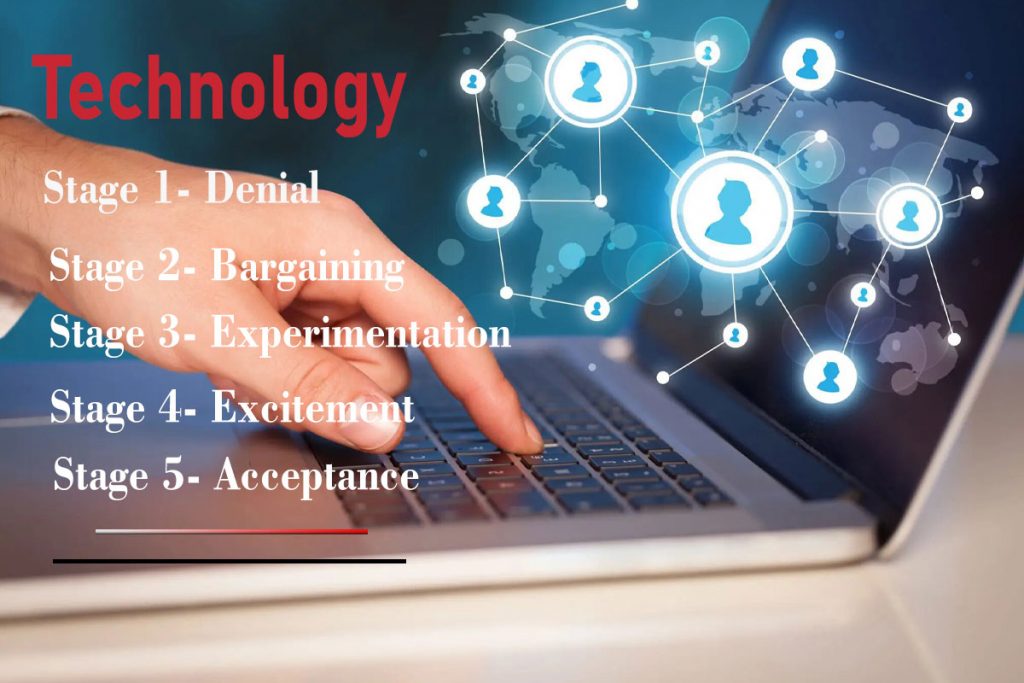Schools across the globe are going during a growth spurt of sorts, which is both painful and inevitable. I’m talking, of course, about technology addition. Maybe your class is using a COW (Computer on Wheels) cart once a week or maybe every scholar in your school is suddenly holding an iPod and administrator are throw around the dread phrase “going paperless.” what the level of technology addition, we all seem to be in some state of transition to new technology at any given time. The painful truth, while, is that no matter how many professional development session we receive or how many tools we are given, many adults resist to adapt to new technology. We move toward the new school year fully aware that our students will hack the media and turn it to their own unusual uses before we as teachers even learn to turn the device on. The solution to this trouble is simple. It’s time to take a page from our students’ playbook. We need to jump quickly over the hurdles of fear, fear, and distrust, in order to come out in front in the technology race.
Beat the Fear of New Technology
Not unlike the 5 Stages of Loss and sorrow, all people (not just adults) go from side to side a series of expected reaction when confronted with new technology. Meaningful that these stage are the same for everyone and that it’s not just you next to the world, you can start to move from side to side the stages more quickly. You can learn to follow the lead of your student and turn fear into thrill and ultimately, acceptance.
Stage 1- Denial
As teachers, we work hard to hone our craft. Year to year we make small adjustment to the prospectus, our lesson plans, and our classroom running systems in order to exploit our efficacy. Therefore, it can feel like a real shock when administrator declares an abrupt and far-reaching change, such as a paperless classes, and 1:1 technology addition (where each student works on a machine, whether it is a computer, tablet, or even their phone). Many teachers will skill an automatic reply to the news. The general response is “This is never going to work!”
It turns out this is a normal response toward new technology. Even brood, who seem supple and excited about every new wave of technological development, go through an initial uncertainty? The key to successful technology receipt is to accept that you will feel disturbed and scared. It is normal. Simply acknowledging your fear can help you move through this phase extra quickly. The last thing you want is to let the fear take over and for paralysis to set in. It’s OK to say “I’m freaked out and I don’t like this.” But don’t discontinue there. Move past the fear and try the technology.

Stage 2- Bargaining
“They can put this in my classroom, but they can’t make me use it!” Maybe you’ll tell physically that you will learn the bare least. You’ll use the technology during a principal scrutiny of your class, or you’ll use it in the first week of school and then put it away and go back to your regular, proven, and routine. bargain isn’t actually a bad thing in this state. It can smooth the pathway toward in fact using the new device. Even technology enthusiast will say “I’ll try using this but if it doesn’t work for me, I’m not leaving to pursue it.” As a educator, tell yourself that you will give the technology a try. If you don’t like it, you can use it as minimally as likely, but you will at least be giving yourself consent to try it out without a heavy feeling of risk.

Stage 3- Experimentation
This is the key stage to successful technology adoption. It’s the metaphoric rotating point for your attitude as a technology user. Once you allow yourself consent to trial with the technology and actually begin clicking from side to side it (whether it is a new device such as an iPod or a new website like Edmodo.com) it is through testing that we really overcome our fears.
While experiment with the new technology you may hit a roadblock. Your aggravation may spike, your fear may flare up once more, but don’t let that stop you. Trust that you will not injure the device just by clicking around on it. You can always reboot, restart, or reload. Look for a help key, user guide, or even YouTube class videos that can help you overcome these roadblock. As you trial, keep an open mind and look for anything attractive or helpful to you.

Stage 4- Excitement
More often than not, testing with a new tool will lead teachers to become eager about the request for their classroom. Teachers are by their very natural world creative and pioneering people. We always look at resources with an eye for separation and version for our students. It is likely that you will begin to think of ways this new tool will fit into your lessons while you are experiment with it. Conversation with other teacher is key to ironing out the details and paving the way toward actual request in your class. Research the technology online and read teacher blogs and reviews to get to know the product even better and see how others are apply it well in their classes.

Stage 5- Acceptance
The faster you can move physically through the previous stage, the sooner you will feel sure using the new technology. receipt means you are ready to write this technology into your class plans, make the most of its usefulness, and truly get the most out of this plan for the benefit of your student.
Everyone moves from side to side the stages of technology acceptance at their own rate. Though being aware that you will feel an first push-back, you can move past your fears toward a creative level of looking at and receipt more quickly. As teachers, we don’t always have control over new instructive reforms or program initiative in our school, but the one thing we can control is how we respond to these changes. By moving past the fear we can spend our energy in more productive ways. Good luck with whatever your school has planned for the pending year. You can handle it. Even if you’re “going paperless”!

Everyone goes from end to end 5 stages when faced with new technology.
- Denial
- Bargaining
- Experimentation
- Excitement
- Acceptance
By speeding through the first few stages and allowing you to be irritated and fearful, users can fast become tolerant of new technology.



